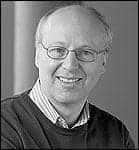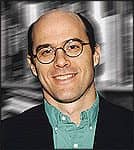Understanding how HPDs attenuate sound and their physical limitations

|
| Marshall Chasin, AuD |
There are three important, and related, laws of physics that explain most of the frequency-specific attenuation patterns of hearing protection devices (HPDs). These are the same laws that explain head shadow and body baffle affects with hearing aids as well as most of room and speech acoustics. Whether these laws apply to hearing aids, rooms, the human vocal tract, or HPDs, the results are the same and are measurable. The three laws are:
- High frequencies are more easily attenuated in small spaces;
- Tubes have (wavelength) resonances that are lost upon occlusion;
- The greater the mass of the obstruction, the greater the attenuation (independent of frequency).
The physics of the third law is relatively complex and is beyond the scope of this article. Suffice to say that an HPD of greater mass will provide more overall attenuation than a lighter HPD, but the shape of the frequency attenuation curve will be the same.
Law #1 High Frequency Attenuation
Higher frequency sound energy is more easily obstructed than lower frequency sound energy. Unless something special is done (eg, the use of a resonator or an electronic circuit), there will always be greater attenuation at 4000 Hz than at 250 Hz for any given HPD. (Author’s note: Other articles in this edition of HR explore the wide range of HPDs that either use electronic circuitry or passive acoustic networks to improve communication or to minimize the degree of high frequency attenuation).
The reason for greater attenuation of high frequencies is related directly to the wavelength of the sound. Higher frequencies have shorter wavelengths and lower frequencies have longer wavelengths. As a rule of thumb, sound energy will be attenuated more if an obstruction (eg, HPD or a wall) is at least one-half the wavelength of the sound. An obstruction of any given size will therefore be more likely to attenuate a higher frequency sound (a shorter wavelength) than a lower frequency sound (longer wavelength) simply because the obstruction will be a greater proportion of a shorter higher-frequency wavelength.
We know this from hearing aid acoustics in our discussions on the head shadow, body baffle, or pinna effect. High frequency sounds are attenuated from one side of the head to the other which causes an asymmetry—hence a benefit for binaural hearing aids. The pinna effect is the result of a reflection of the higher frequency (shorter wavelength) sounds back to the ear, adding up constructively with the initial incident sounds, thereby enhancing the amount of higher frequencies entering the ear (or an ITC/CIC microphone). These examples are just part of this same law of physics. It depends on whether the higher frequency sound is attenuated (on the other side of the obstruction, such as the head or a HPD) or impinging on the obstruction from the front, such as a high frequency reflection (and therefore, enhancement) such as in the pinna effect.
| Law #1: High frequencies are attenuated | Law #2: Tubes have resonance/amplification |
|
|
|---|---|
|
Table 1. Some examples from the field of hearing aids, room acoustics, musical acoustics, speech acoustics, and HPD that derive from the two laws of physics discussed in this article. |
|
Table 1 lists (along with Law #2) some common hearing aid, room, musical, vocal tract (speech sciences), and HPD manifestations of this law. One way to think about this law is to imagine yourself sitting on a beach and leaning up against a large boulder with your back to the water (and drinking an appropriate beverage). If a short wind-induced wavelet smashes up on the beach, the large boulder will keep you (and your drink) undiluted. This would be equivalent to a higher frequency sound. However, if a long rolling wave (low frequency) hits the beach, the boulder is physically not a significant part of its wavelength, so the water continues past the non-obstructing boulder, drenching you (and watering down your drink).

|
| Figure 1. A typical attenuation pattern of a custom earplug HPD as a function of frequency. For short (typical) insertion of the earplug, the lower frequencies (125-500 Hz) are only attenuated 15-25 dB while the shorter wavelength higher frequencies (2000-4000 Hz) have up to 40 dB attenuation. |
Figure 1 shows a typical attenuation pattern of a custom earplug HPD as a function of frequency. For short (typical) insertion depths of the earplug, the lower frequencies (125-500 Hz) are only attenuated 15-25 dB, while the shorter wavelength higher frequencies (2000-4000 Hz) have up to 40 dB attenuation. This attenuation pattern would show more low frequency attenuation if the earplug HPD were inserted deeper into the ear canal (also shown in Figure 1). This is because of a greater “effective” mass of the earplug being involved in the physical attenuation, as well as the lack of a “slit leak” between the ear canal wall and the earplug. A slit leak reduces the low-frequency attenuation in the same way that a slit leak in a hearing aid reduces the amount of low frequency amplification.
Law #2 Resonance of Tubes
Tubes have resonances that are lost upon occlusion. All tubes (and chambers) have resonances that serve to amplify sound if the frequency is near the resonant frequency of the tube. For example, the average adult ear canal can be envisioned as a 28 mm long tube that is closed at the eardrum (medial) end and open at the outside (lateral) end. Such a tube is called a quarter-wavelength resonator; at about 2700-3000 Hz, this tube has about 17-22 dB gain, depending on the orientation (angle and azimuth) that sound enters it.1
The hearing industry calls this the real-ear unaided response (REUR). It is important to know this, because upon occlusion of the ear canal tube, this natural amplification is lost. In both the hearing aid and the hearing conservation fields, this is called insertion loss. The difference is that, with HPDs (unlike hearing aids), there is an additional insertion loss caused by the physical presence of the earplug.
Some examples of the use of this natural ear resonance, or loss of it due to occlusion, are shown under the Law #2 section of Table 1. For example, players of the French horn place their hands in the bell of the horn to alter the resonant properties of the instrument. Complete occlusion would result in a complete loss of that resonance, such as with an occluding hearing aid earmold or an occluding earplug HPD.

|
| Figure 2. Frequency-by-frequency attenuation of these two types of HPDs matched for attenuation at 1000 Hz. In the real world, most earmuff HPDs will provide more attenuation than an earplug HPD (because of the greater mass), but by matching or “normalizing” the attenuation at 1000 Hz, the differing slopes become apparent. |
This law also helps explain the differing attenuation patterns between earplugs and earmuffs. Other than the mass of these two types of HPDs, if an earplug is inserted into the ear canal, there is an occlusion and a subsequent loss of the REUR. In contrast, an earmuff does not destroy the ear’s natural resonance. Subsequently, earplug HPDs tend to have a steeper attenuation slope than earmuff HPDs. The earplug causes an additional loss of energy in the 2700-3000 Hz region that is not shared with over-the-ear earmuff-style HPDs.
Figure 2 shows the frequency-by-frequency attenuation of these two types of HPDs matched for attenuation at 1000 Hz. In practice, most earmuffs will provide more attenuation than earplugs (because of the greater mass), but by matching or “normalizing” the attenuation at 1000 Hz, the differing slopes become apparent.
Because the earmuff provides a flatter attenuation pattern than an equivalent earplug, for any given attenuation, the word recognition in noise2—as well as the localization ability—is better with the earmuff style than the earplug style.3-5
Limits of Attenuation for HPDs: Bone Conduction

|
| “‘Selling’ in the Professional Setting,” by Kelly Riggs. February 2006 HR.
“Effective Employee Supervision,” by Kelly Riggs. April 2006 HR. “Why Quality Matters,” by Brian Taylor, MA. August 2005 HR. “MarkeTrak VI: On the Issue of Value: Hearing Aid Benefit, Price, Satisfaction, and Repurchase Rates,” by Sergei Kochkin, PhD. February 2003 HR. |
As can be observed in Figure 1, the maximum amount of attenuation provided by HPDs is on the order of 40 dB in the 2000 Hz region. This is not coincidence, and this result is entirely empirical (ie, it does not deductively derive from either of the above two laws). Attenuations above this value are either false or artifact.
At 2000 Hz, sound above 40 dB will enter the skull directly, by-passing the ear, so that—regardless of what can be measured on a mannequin or a microphone in the canal method—an individual will not be able to receive more than 40 dB attenuation at 2000 Hz. This was clearly shown in work of several researchers, and specifically in the work of Elliott Berger and his colleagues.6
Five Things to Remember About HPD Acoustics
- HPDs, unless acoustically or electronically modified, have greater attenuations in the higher frequency regions.
- The deeper the fit of the HPD, the greater the lower frequency attenuation.
- Given similar masses, an earplug HPD will have a steeper attenuation pattern slope than an earmuff HPD because of the loss of the natural ear canal resonance (REUR).
- Given similar masses, speech discrimination and sound localization ability with earmuff HPDs will be better than earplug HPDs.
- The maximum attenuation of HPDs is 40 dB in the 2000 Hz region.
Marshall Chasin, AuD, MSc, Reg CASLPO, Aud(C), is the director of auditory research at the Musicians’ Clinics of Canada, Toronto. Correspondence can be addressed to .
References
- Shaw EAG. Transformation of sound pressure level from the free field to the eardrum in the horizontal plane. J Acoust Soc Am. 1974; 56:1848-1861.
- Abel SM, Alberti PA, Haythornwaite C, Riko K. Speech intelligibility in noise: Effects of fluency and hearing protector type. J Acoust Soc Am. 1982;71(3):708-715.
- Chasin, M. & Chong, J. (1999). Localization problems with modified and non-modified ER-15 Musician’s Earplugs. Hear Jour. 1999;52(2):32-34.
- Brungart DS, Kordik AJ, Simpson BD. The effects of single and double hearing protection on the localization and segregation of spatially-separated speech signals. J Acoust Soc Am. 2004;116(4, Part 1):1897-1900.
- Simpson BD, Bolia RS, McKinley RL, Brungart DS. The impact of hearing protection on sound localization and orienting behavior. Human Factors. 2005; 47(1):188-198.
- Berger EH, Kieper RW, Gauger D. Hearing protection: surpassing the limits to attenuation imposed by the bone-conduction pathways. J Acoust Soc Am. 2003; 114(4, Pt 1):1955-1967.





